- Administrator
- Albums and Singles
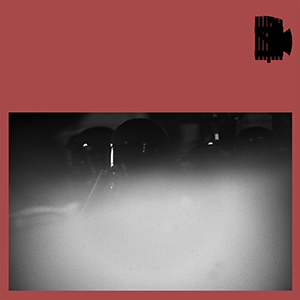 With obviously no dearth of source material or motivation, Locrian and The Holy Circle’s Terence Hannum has released a third album this year as his solo anti-fascist power electronics guise Axebreaker. Dense with rage, frustration, and noise, They Wear the Mask and Their Face Grows to Fit It does not stray drastically far from his previous albums, but continues his growing legacy of anger and nuanced aggressive electronic arrangements. A combination of catharsis and complexity, Hannum's work is as conceptually narrative as it is purely visceral.
With obviously no dearth of source material or motivation, Locrian and The Holy Circle’s Terence Hannum has released a third album this year as his solo anti-fascist power electronics guise Axebreaker. Dense with rage, frustration, and noise, They Wear the Mask and Their Face Grows to Fit It does not stray drastically far from his previous albums, but continues his growing legacy of anger and nuanced aggressive electronic arrangements. A combination of catharsis and complexity, Hannum's work is as conceptually narrative as it is purely visceral.
Black Ring Rituals/A Red Thread
Hannum's description of Axebreaker as a power electronics project makes sense, but I do think that sells it somewhat short.I completely respect the motive behind it:as a genre I can appreciate a lot of artists who fall under that umbrella, but there are many more that either flirt with fascist imagery without clearly endorsing or decrying it, or at worst wearing it like some sort of badge of honor.However, regardless of the political affiliation it tends to be a one-note genre:distorted analog synths, shouted/screamed vocals buried under layers of flanger and delay, and murky lo-fi production.
Like his previous works, They Wear The Mask differs from that framework in a multitude of ways.Sure, there is a lot of distortion, noise, and screaming, but the sounds are rich and the arrangements nuanced, and the album is structurally varied and carefully considered.The five pieces included blend not just these elements, but also field recordings (likely from in person recordings as well as televised protests) and hints of lush melody that add an additional layer to the proceedings.
The opening "A Strategy of Tension" is titled perfectly, emerging from what sounds like sustained car horns and field recordings that slowly grow denser and denser.Under this, Hannum constructs a foundation of expansive synthesizers that, when combined, results in a growing sense of unease and aggression simmering just below the surface.Besides the fact that this makes sense given the underlying concepts behind the project, it also works exceptionally well as an album device building tension, although it never fully releases.
This tension erupts on the following "Receptive to Extremist Ideologies" via echoed, yelled vocals atop a hollow warehouse like ambience.The vocals eventually succumb to a heavier burst of subsonic bass and noise that capture anger and frustration perfectly.However, the combination of a constantly evolving dynamic, and some melodic synthesizers distant in the mix make for a standout work in depth and nuance.
With the brief rattling noise and creaking metal of "Patriot Prayer (Retribution)" bridging the two, the title piece makes for the other major work here.Building from slow, menacing electronics, Hannum keeps a synth soundtrack passage beneath the mix as he throws in outbursts of noise and distant screams.Though there are significant amounts of distortion and overdriven noise, again he keeps the entire thing active and dynamic, never falling into a simplistic or repetitive rut.With the closer "Defeat Forever" increasing in harshness from a motor-like drone into an ending of rioting and breaking glass there is no real sense of relief, however.
They Wear the Mask and Their Face Grows to Fit It is not a radical departure from Hannum’s previous Axebreaker works over the past three years, but it does not need to be.It is again an excellent encapsulation of present day rage and frustration that thankfully is anything but focusing on peace and tolerance.While Hannum’s project was likely motivated by Trump taking the US presidency beginning in 2017, I do not see the change coming in 2021 leading to any decrease of inspiration given how things are post-election and pre-inauguration.Next year could be a four album Axebreaker year, and I have no doubt all of them will be of the utmost quality.
Read More
- Administrator
- Albums and Singles
 Homelessness is driven by many things, but it has one thing in common: everyone who is afflicted is human. With this recognition comes both a feeling of cold reality and an expectation of change. The latest from Portland’s Soft Kill—a city that has one of the highest homeless populations in the United States—was forged through their personal encounters with the youngest "lost" denizens of the city. Dead Kids, R.I.P. City lays out stark, confronting tales of addiction, bravery in abandonment, and hope amongst loneliness through luminous soundscapes and lingering melodies. What followed is their most complex yet accessible release yet, a richly human and mournful album from a band already associated with melancholy.
Homelessness is driven by many things, but it has one thing in common: everyone who is afflicted is human. With this recognition comes both a feeling of cold reality and an expectation of change. The latest from Portland’s Soft Kill—a city that has one of the highest homeless populations in the United States—was forged through their personal encounters with the youngest "lost" denizens of the city. Dead Kids, R.I.P. City lays out stark, confronting tales of addiction, bravery in abandonment, and hope amongst loneliness through luminous soundscapes and lingering melodies. What followed is their most complex yet accessible release yet, a richly human and mournful album from a band already associated with melancholy.
My experience stepping into this release was a bit like cueing up The Cure’s Disintegration for the first time, anticipating what would come after the initial introduction before being dragged fully under by the lush, orchestral waves of synths and guitars. Yes, that’s a pretty big statement, and while Dead Kids, R.I.P. City doesn’t have the immediate impact of an opening track like "Plainsong," the album is similarly filled with a soaring sound of warm synths, layers of guitar reverberation, incurably catchy melodies, and familiar comfort of post-punk bass tones. Far from being a substitute for obvious comparisons, underneath the dark lustre lay vocalist and lyricist Tobias Grave’s frank dialogue about the realities of trauma, addiction, and death on the streets.
The spectre of such dark things haunt the very fabric of the album, exuding a hopelessness that manages to come out the other side, sparking powerful recognition of the matters at hand. Songwriter and singer Tamaryn shares vocal duties on "Floodgate," emitting a anguished cry in remembrance of loved ones, lost and forgotten like pieces of refuse in Portland’s streets: "This flood has taken things / This god has grown tired / Tired of loving me / This voice / This voice just leave it be / Of all the things I deemed were down to bury me / I lay here underground." In an impassioned message shared by Tamaryn, she issues a rallying cry for those forgotten:
"The gates are open. The underworld rises and now we all know the rich want us dead. Not just the fringe outsiders and junkies, all of us."
A rich musical assortment is available here. Choir Boy’s Adam Klopp's vocals on the darkly catchy "Matty Rue" add a dreamy feel to the already shimmering guitar sounds. Majestic synths and a danceable hook belie a rue of a lost young soul: "He’s in trouble now, the city’s growing colder. / He’s in trouble now, whispers in our ears / cannot strangle fear, cannot hold back these tears / It all just means the shame, it makes you shiver." Magnus Opus "Oil Burner" offers waves of distortion wrapped in droning rhythms, offset by interludes of quiet balladry. The album achieves a one-two gut punch in closer "I Needed the Pain" using only piano, violin and acoustic guitar, offering a first-person look at surviving alone.
Synthesizers still feature prominently in Soft Kill, but guitar and rhythm section are given more presence this time, hopefully expanding their reach beyond fans of darker genres. The drums are clearer, the fidelity is richer, composition more varied, with a wider assortment of guitar tones at play. Producer David Trumfio (Wilco, Built To Spill) surely helped provide the band’s most solid production to date, further perfected by fabled mastering engineer Howie Weinberg (The Cure, Nirvana, and scores of others). Dead Kids, R.I.P. City is a huge leap forward in an already impressive sound catalog from Soft Kill, and fans across multiple genres should find something to enjoy.
 
 
 
 
Read More
- Administrator
- Albums and Singles
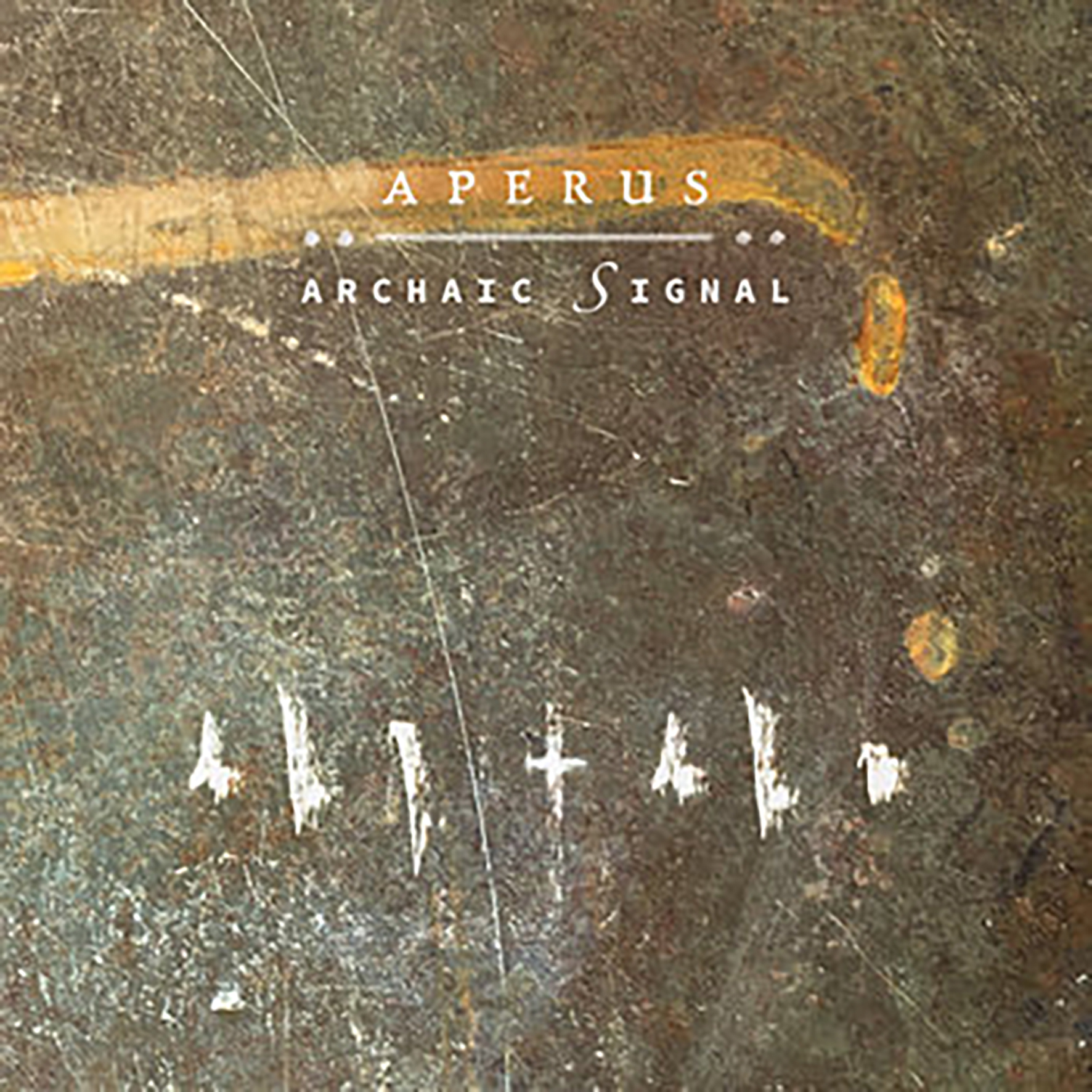 Even though I should absolutely know better, I have spent plenty of time and money over the years trying to find new artists that scratch roughly the same itch that several of my favorites did in their prime. In my heart, I know that no one will ever be able to replicate the magic of classic Dead Can Dance or Zoviet France or whoever, but that certainly does not stop me from endlessly disappointing myself with my doomed and stupid quest. Sometimes, however, I am drawn towards an album due to its surface resemblance to something familiar only to discover that the artist shot right past the target nostalgia zone to achieve something that is unique and wonderful in its own right. That is the case with this latest release from Brian McWilliams' long-running Aperus project, which calls to both the "sci-fi tribal" aesthetic of classic Zoviet France/Rapoon and the desert/ethno-ambient side of Projekt's late ‘90s heyday (Steve Roach, et al.). As far as I am concerned, that is an absolutely wonderful stylistic niche to stake out, but McWilliams' execution is what elevates Archaic Signal into something truly special. Rather than simply recalling the iconic figures who birthed a milieu that I love, this album reveals that those original visions have evolved into a compelling new phase with some visionary architects of its own.
Even though I should absolutely know better, I have spent plenty of time and money over the years trying to find new artists that scratch roughly the same itch that several of my favorites did in their prime. In my heart, I know that no one will ever be able to replicate the magic of classic Dead Can Dance or Zoviet France or whoever, but that certainly does not stop me from endlessly disappointing myself with my doomed and stupid quest. Sometimes, however, I am drawn towards an album due to its surface resemblance to something familiar only to discover that the artist shot right past the target nostalgia zone to achieve something that is unique and wonderful in its own right. That is the case with this latest release from Brian McWilliams' long-running Aperus project, which calls to both the "sci-fi tribal" aesthetic of classic Zoviet France/Rapoon and the desert/ethno-ambient side of Projekt's late ‘90s heyday (Steve Roach, et al.). As far as I am concerned, that is an absolutely wonderful stylistic niche to stake out, but McWilliams' execution is what elevates Archaic Signal into something truly special. Rather than simply recalling the iconic figures who birthed a milieu that I love, this album reveals that those original visions have evolved into a compelling new phase with some visionary architects of its own.
One of my many pet theories is that our immediate surroundings play an enormous role in both how we feel about ourselves and the world as a whole.Consequently, I had a bit of a "eureka!" moment when I listened to an Alan Moore interview in which he observed that if you feel you are living in a rat hole, you start to feel like a rat.Conversely, if you see magic and history all around you, you start to feel like you can do great things yourself.I bring this up because I do not think that this album could exist if Brian McWilliams was not a landscape photographer living in "the high deserts of northern New Mexico," as space, solitude, and a healthy immersion in the non-human natural world are near-essential pre-requisites for escaping the numbing noise of the current age long enough to contemplate more existential and timeless matters.
Based on the conceptual inspirations behind Archaic Signal, it is clear that McWilliams was impressively successful in that escape from noise, as the album took shape around his revelation that bird songs, cosmic noise, radio transmissions, and ancient petroglyphs are all potentially part of the same infinite communication continuum extending throughout all of time and space.Appropriately, each of those threads finds its way into the album somehow, as these nine songs are peppered with bird sounds and an unpredictable array of radio transmissions picked up by a high-powered radio antenna in the Netherlands (numbers stations, space noise, garbled news broadcasts, a distorted call to prayer).The petroglyphs, on the other hand, are included as an accompanying series of postcard-sized art.Given McWilliams pedigree as a photographer, it is not surprising that the images provided with the physical album are an integral part of the whole, but the petroglyphs add an enticing layer of mystery as well.If I were inclined, it would be very easy to tie my mind in knots trying to figure out if any image holds the Rosetta Stone that reveals a shared deeper meaning that unites cave art, happily twittering birds, and the cryptic radio transmissions of distant star systems.
The album opens in admirably strong fashion with the throbbing and gnarled menace of "New Antenna," but it is the following title piece that best illustrates the album's overarching aesthetic.The heart of "Archaic Signal" is a warm haze of intermingled drones that slowly curls like smoke.At the same time, a swelling undercurrent transforms into a lazily heaving pulse that feels like a series of vast cosmic exhalations while a surreal host of phantasmal sounds in the periphery billow and smear, emerging from the drones like organically growing tendrils.Gradually, the original theme evolves into an unexpectedly heavenly coda of choral voices floating through a hissing sea of static and chatter.It all amounts to absolutely gorgeous piece for a number of reasons, but the primarily one is that McWilliams creates a compelling and dynamically rich central theme that propels the piece forward, then enhances it with a series of subtle psychedelic flourishes that feel like a fraying of reality's edges that hints at greater depths yet to be revealed.Needless to say, doing that and making it seem organic and effortless is a neat trick and McWilliams repeats it again and again in varying form as the album unfolds.
Each of Archaic Signal's nine songs is strong in its own way, but my favorite stretch is a three-song streak near the middle of the album that begins with the seething, undulating, and immersive swirl of "Newspaper Rock."It never quite evolves into anything more, but it does not need to, as it feels like a warm and beautiful dream state that lazily swells and recedes like the rhythm of the tides.The epic "Canopy of Stars," on the other hand, is the album's deepest foray into the "sci-fi tribal" aesthetic, as massive drones heave over a stomping and clicking percussion motif en route to a wonderfully churning and blackened finale.The following "Birdsong as Mantra" almost feels like a supernatural deepening of the scene painted by its predecessor, evoking the disorienting sense that time is bending and stretching as I sink further into another layer of reality.In more plain terms, it is an enveloping feast of deep, heavy oscillations and cheerily burbling bird songs that smear and linger in pleasingly hallucinatory ways.    
The usual peril with deep drone music in this vein is that so many artists lack the harmonic sensibility and lightness of touch necessary to pull it off, resulting in a mountain of forgettable and interchangeable releases celebrating monochromatic bass thrum, seismic rumble, and echoing cracks.Admittedly, such fare can still be impressive if an artist's sound design talents are exceptional, but McWilliams takes a much more nuanced, complexly evocative, and personal path.Rather than attempting to replicate the sheer power and scale of massive geological or cosmological events, McWilliams has instead managed to evoke the sense of wonder that they inspire on a human scale.The difference is significant, as it is extremely satisfying to feel like I am lying on my back beneath a vast, twinkling panorama of stars, drinking in all the rich sensory details of my surroundings.It is dramatically less satisfying to merely think "I guess this captures the cold infinity of space pretty well."The former is truly rare achievement and McWilliams has managed to do it as well as just about anyone with Archaic Signal.Needless to say, I will soon be digging further into McWilliams' discography to see what other exquisite pleasures I may have slept on, but is hard to imagine any way that he could improve upon this particulate release.With the arguable exception of the dub-techno elements in "Archaeodreaming," Archaic Signal is an unwaveringly sustained and absorbing spell that successfully untethered me from the present reality and dropped me into a vividly realized alternate world of beauty and mystery.While I suppose only time will tell if this album is destined to become a classic of the genre, it definitely feels like one to me right now.True objectivity about art is basically impossible, obviously, but if I try to disregard the romance of nostalgia, I am hard-pressed to think of many canonical albums in this vein that are as thoughtfully constructed and immersive as this one.
Samples can be found here.
Read More
- Administrator
- Albums and Singles

Ray is Ashley Paul's bright, sensual return to Slip: a lifting, delighting suite of yearning winds, loose beats, and cocooning, humid bass coming together and falling apart as songs.
The LP airs Paul's new trio, alongside bass clarinettist Yoni Silver and bassist Otto Willberg, who fatten out and shine light on her singularly intimate, multi-instrumental with mystery and grace. 2018's Lost In Shadows wrote into the bewildering ecstasy of recent motherhood with a tingling resolve. On Ray - recorded remotely during lockdown - Paul's deliciously hesitant songcraft is an outpouring and an anchor in freshly tumultuous times.
Says Ashley:
"Over the past six months I've found myself needing music in a new way, a way of coping. I found again albums I had loved in the past, full of melody and humor, to cancel out the barrage of terrible news happening outside. I think this album is a reflection of that need. There is the playfulness of spending my days with our four year old, and the hours spent tending to plants in the garden and examining bugs, and also the pain of missing family and friends. It's hard for me to fully comprehend the breadth of emotion I've felt recently but maybe this is a small window.
The trio idea had been formulating in my head for months, and then lockdown happened. At first I was very disappointed and thought I'd be waiting forever to finally make it a reality, but time passed. I started working on a new album and could only hear it with these guys. We recorded remotely. I sent material in a variety of ways; written, aurally and verbal ideas/queues, sometimes with just a shell of a track and other times nearly completed. I wanted all our voices to be present, and to allow freedom in the parts for interpretation and improvisation. Maybe because we've all worked together in various situations and are friends, I’m not sure, but it came together naturally, magically and quickly."
More information can be found here.
Read More
- Administrator
- Albums and Singles

Sparkly disjointed pop by Finnish luminary Jonna Karanka!
As part of legendary groups such as Avarus, Hertta Lussu Ässä and Olimpia Splendid, Jonna Karanka has been a key player in the Finnish underground for most of this century. Through her Kuupuu alias, she dwells among an illustrious generation of Finn sound wizards which includes Tomuttontu/Jan Anderzen, Tsemba/Marja Ahti, Lau Nau, et al. Through the collaging of warbled acoustic instruments and looped-up electronics, Kuupuu has long been carving out her own lines into this post-free folk/neo-psychedelia lore.
Plz Tell Me, her first LP since 2013's Sisar, was originally a self-released cassette through which new forms emerged in the Kuupuu repertoire. Jungly orchestral arrangements meet slick dub-tinged productions in a series of pop tunes for disjointed times: whether you dance or swoon or stare confusedly into space is up to chance. The original nine tracks get the full LP treatment for this Belgo-Finn treaty renewal, with 12 songs that weave down endless summer full of disembodied voices that moan and quaver as they murmur lullabies to punctured beats. Plz Tell Me opens a dazzling zone for fantasies to inhabit and intertwine, where incongruent sounds and a noisy kit of dreamed storylines knit a full tapestry of whimsical bliss.
More information can be found here.
Read More
- Administrator
- Albums and Singles

Canadian violinist Christopher Whitley presents his first release of this year, Landscape Shifts (Slight Return), a collage of material derived from a 40-minute single movement piece that originally premiered in Austin, Texas earlier this year, composed by Christopher Whitley for small ensemble, electronics and projections.
Having been composed and performed a month before the Covid-19 related US shutdown, the piece was originally conceived in response to the book How to Do Nothing: Resisting the Attention Economy by Jenny Odell, yet took on a new meaning as the core theme proved to be uncannily prescient in the following months of enforced stasis and lockdown.
The work itself, split into two parts, evokes themes of solitary introversion and serene patience, embedded in an tranquil ambiance featuring light movements of cello, voice, violin, piano, percussion and electronics, yet the piece never comes to feel cluttered as the small ensemble unfolds in a flurry of harmony throughout its 23-minute duration, as even in its busiest moments Landscape Shifts (Slight Return) is as much about the music as it is about the silence in between the individual sounds, giving the work an acute sense of intimacy that offers listeners a moment of sincere respite in these turbulent times.
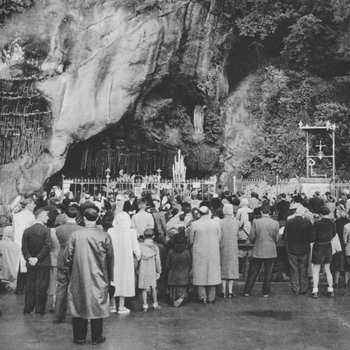
Under his moniker "Blessed are the Hearts that Bend," filmmaker and artist Luke Seomore channels his narrative abilities and experiences into musical output. Is My Destroyer, his latest album, is an ode to film, legacies and trauma.
On the album, Luke showcases meticulously sculpted compositions that range from solemn ambient soundscapes to orchestral symphonies, often featuring spoken word or field recordings, while being permeated by a rich sense of cinematic atmosphere. Is My Destroyer unfolds like a story arc, always filled with a sense of time and direction as ideas morph, grow, disperse and rekindle; with key pieces like "Palace" these ideas seem unbound, bursting out of their seams with emotional grandeur, elegance and passion, while other works such as "Orio" or "The Tower" offer sincere moments of reprieve.
In the end, Is My Destroyer feels like a film without pictures, enticing listeners to fill the void with their own imaginings as they experience this moving body of work, leaving one with both a shared sense of connectivity and a singular experience, which ties in to the core theme of the work, one where Luke questions how experiences, legends, ideas and trauma get passed on through generations.
Initially self-released digitally earlier this year, Ruben Kotkamp's debut album fall/winter 19ʼ20 showcased the Netherlands-based artist's prowess at crafting a musical world entirely his own, enveloped by a fabric of electronic blips, glitches and clamor. Yet under this soundscape of synthetic networks lies a poignant human component that underpins the inherent moving quality of the work, which when viewed in its entirety comes across as a meditation on the digital ages continually intersecting framework between man and machine, voice and sound, body and fabric.
For this expanded issue, Vaknar presents the original album in physical format for the first time, while including two new pieces that further expand upon themes found in the original work, such as a new composition by Ruben Kotkamp, which interlaces some of the albums components into a 12-minute barrage of static noise and modulated voice experiments.
Additionally the expanded album includes a rework by Belgian composer Mathieu Serruys, who likewise reworks various components from the album and molds them into a 9-minute long, heavily tape-processed soundscape of clattering hiss, droning horns and tempered voices, ending the album on a final swan song of deteriorating machinery and human impermanence.
More information on all three releases can be found here.
Read More
- Administrator
- Albums and Singles
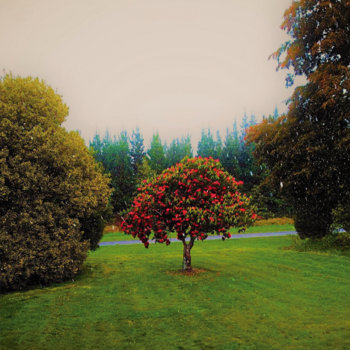
Spanning the last 38 years, The Bats have clocked nine incredible albums; each one seeing the band evolve with new material from the prolific songwriting hand of Robert Scott. Add to that tally the extra singles, b-sides, EPs, compilations and tribute songs they’ve recorded, creating a succinct setlist is a nearly impossible task.
Their 10th full-length, Foothills, was recorded in Spring 2018 at a country retreat pop-up studio. At that time, 15 songs were captured and immortalized in the Canterbury foothills of the Southern Alps, Aotearoa (New Zealand). Only too well, The Bats know the possibilities, potentialities and sonic vistas that arise when one takes the reins for the recording process in a beautiful place that's on home turf.
Robert Scott, on the making of Foothills has said "Time marches on... finally, we found a gap in our busy lives and chose a week to convene. We found a house that is usually inhabited by ski field workers — Kowai Bush, near Springfield about an hour west of Christchurch and of course nestled in the foothills of the mighty Southern Alps. The songs had been written, demo'd and arranged for some time, but still with a little room for trying things out in the studio. Many carloads arrived at the house, full of amps guitars and recording gear, we set up camp and soon made it feel like home; colored lights, a log fire, and home cooked meals in the kitchen. We worked fast, and within a few days had all the basic backing tracks done, live together in one room, the way we like to do it - it's all about 'the feel' for songs like ours."
The Bats must hold a record in New Zealand (perhaps the whole world, once The Rolling Stones throw in the towel) as a band that has survived with the same line-up for 38 years. No split-ups, no reforming for nostalgia's sake.
So far, half the band have spots in The New Zealand Music Hall Of Fame, vocalist/ guitarist Robert Scott (The Clean) and bassist/producer Paul Kean (Toy Love), and it's only a matter of time before lead guitarist Kaye Woodward and drummer Malcolm Grant find themselves in there too. The four-piece has created twisted wistful folk, psychedelic rock, bouncy twee pop, and everything in between, but whatever the genre, their sound is always distinctively, unmistakably The Bats.
More information can be found here.
Read More
- Administrator
- Albums and Singles
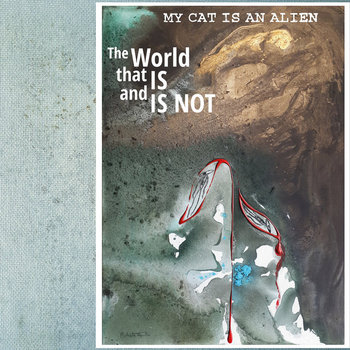
The World that IS and IS NOT is the enigmatic title of My Cat Is An Alien's new "concept album."
The World that IS and IS NOT is the existential reflection of MCIAA on 2020: a pandemic scenario where everything seems to vanish into the Void.
Explicitly dedicating this new studio album to the dark ages we're all living through, more than ever MCIAA stand strong to claim that Music and Art are the primary and true "cure" for spiritual disquiet and moral despair.
Thus the music herein is highly spiritual, sensitive, soft and warm… surprisingly lyrical. Its celestial melodies cannot but induce to transcendental meditations. MCIAA offer a one-way ticket to still unexplored otherwordly territories and better realms of space-time consciousness.
An inborn wisdom that Roberto Opalio resumes in his poem handwritten on the album insert: "In the endless vortex of No-Thing / […] I still do believe / Art can save my Spiritual Noise soul."
Produced by MCIAA in multi-dimensional, fully dynamics-frequency spectrum "STEREOALIEN FIDELITY."
Released on the renewed Opax Private Press imprint in a first, ultra-limited and hand-numbered edition of 100 Silver Color Vinyl LPs, housed in full-color printed jacket with folded cover/insert on Italian fine art linen textured 250g cardboard. Includes a 70x50 cm Poster. Cover and poster painting by Roberto Opalio. Design by MCIAA.
More information can be found here.
Read More
- Administrator
- Albums and Singles

Dan Barrett— the man behind Have A Nice Life, Giles Corey, and Enemies List Home Recordings— has unveiled details for his sophomore album as the electronic project Black Wing. Due out December 11th on The Flenser, No Moon is a gorgeous chillwave/post-punk record with nine bleak yet blissful songs and is a fitting close out to the year 2020.
Written over the course of the last few years, with about half of the songs penned over the last six months (mostly due to pandemic "free time"), No Moon is a heart-wrenchingly honest outpour of emotion. Throughout the writing process, Barrett was having recurring dreams and felt a strange sense of timelessness — that, combined with quarantine is what he simply describes as "a weird experience." Barrett explains, "Quarantine was profoundly isolating. With writing this record, more than anything I just wanted to prove to myself that I could make something out of it. That ended up being a lot of songs about feeling isolated, a lot of 'trapped in my own head' moments. I think that was a lot of people's experience as well."
Barrett formed Black Wing in the mid-2010's as an opposite to his project Giles Corey; where Giles started as 'only acoustic instruments allowed,' Black Wing started with only digital instruments. In 2015, Black Wing released its first proper full length, …Is Doomed, to great critical acclaim. Much like that album, No Moon bubbles with electronica and indie-pop with earworm melodies and affecting lyrics. But No Moon is a transitional change from Black Wing's debut; the songs here are a bit more experimental and there's a significantly wider emotional range to them.
The nine new tracks on No Moon are gloomy yet glorious, heavy while ambient, overwhelming yet alluring, and offer an earnest and honest look into one's self during such a troubling and confusing year — something we all can relate to.
More information can be found here.
Read More
- Administrator
- Albums and Singles
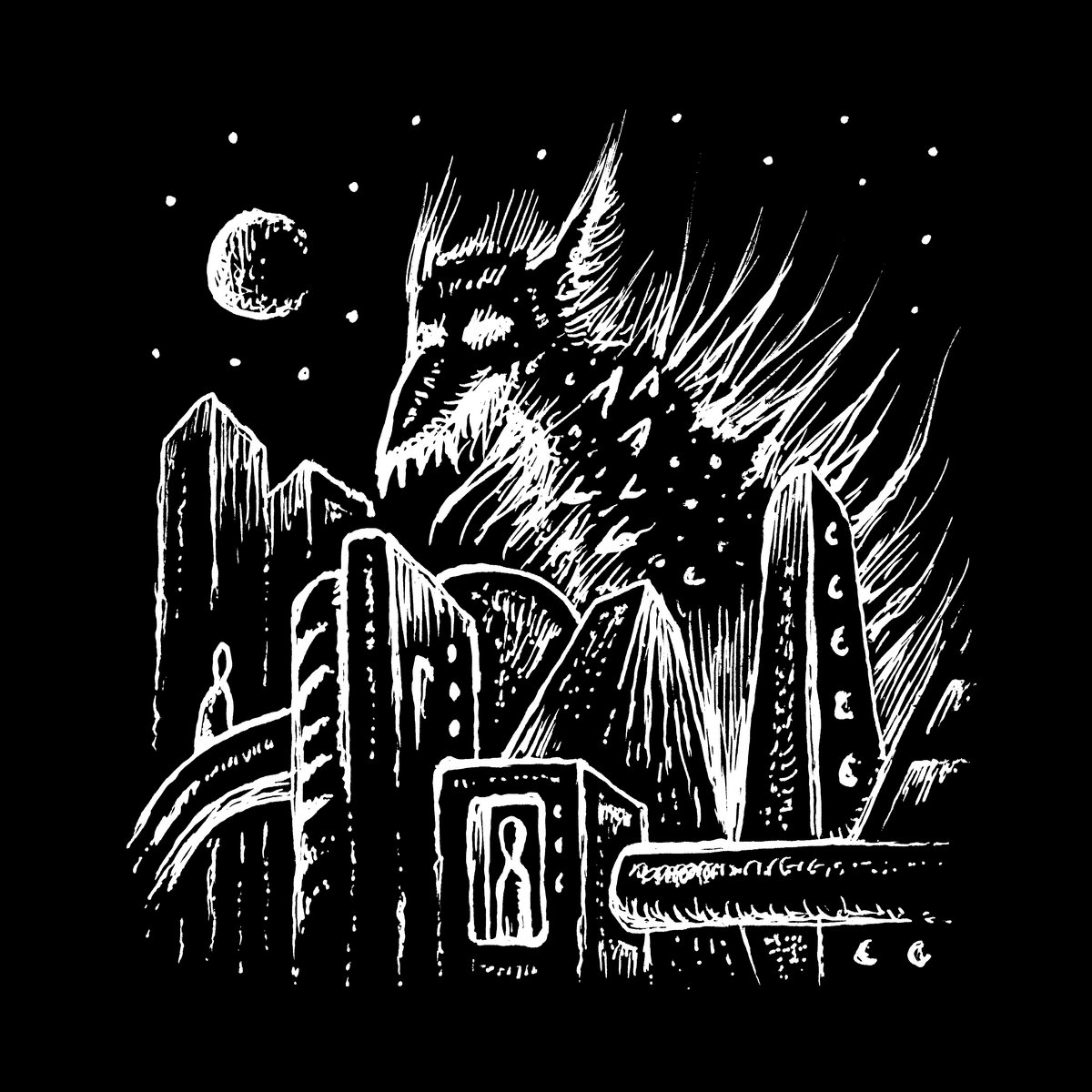 Montreal-based guitarist and designer Eric Quach (Thisquietarmy, Hypnodrone Ensemble, Destroyalldreamers, others) teams up with drummer and artist Michel « Away » Langevin of progressive sci-fi metal legends Voïvod. That these two world-traveling Canadians crossed paths is tremendously fortunate. The Singularity, Phase I blends the immersive rhythms of Langevin superimposed on the myriad techniques of guitar master Quach, crossing musical genres to create a hypnotic and thrilling tribal experience. The expert ear of Quach, the practiced hands of Langevin and the combined musical knowledge of the duo bring to life a fruitful mind-bending soundscape of heavy motorik rhythms, prolonged drones, futuristic sound effects and frenetic improvised jams.
Montreal-based guitarist and designer Eric Quach (Thisquietarmy, Hypnodrone Ensemble, Destroyalldreamers, others) teams up with drummer and artist Michel « Away » Langevin of progressive sci-fi metal legends Voïvod. That these two world-traveling Canadians crossed paths is tremendously fortunate. The Singularity, Phase I blends the immersive rhythms of Langevin superimposed on the myriad techniques of guitar master Quach, crossing musical genres to create a hypnotic and thrilling tribal experience. The expert ear of Quach, the practiced hands of Langevin and the combined musical knowledge of the duo bring to life a fruitful mind-bending soundscape of heavy motorik rhythms, prolonged drones, futuristic sound effects and frenetic improvised jams.
No song is less than five minutes, allowing time for listeners to be grabbed by each piece's particular ambience, generally a flurry of metal and drone that frequently interjects kosmiche elements. Langevin’s rhythmic creativity offers evocative tribal grooves, knowing exactly when to push furiously or break the moment with scattered rhythms, skillfully blending or gracefully opposing Quach’s effects. Their expert chemistry resembles a murmuration of starlings that can turn and change direction at any time, while remaining coordinated in flight. Practiced, yes, but with raw energy.
"Alpha 0000 0011" is a beautiful example of kosmiche homage, built up on layers of a steady, simple underlying rhythm that allow Quach to overlay a dreamscape of ethereal guitar on top and building towards a commanding richness, to suddenly cut into silence. There is a terrific balance between guitar and rhythm throughout the album, and it can be difficult to know whose influence is greater on each track. "Beta 0000 0100" seems to be a track in which Quach serves as backdrop, providing a consistent drone while Langevin's rhythms and space electronics step to the forefront. The symbiosis is masterful, allowing each musician to build up with increasing urgency before Quach pulls back, allowing Langevin to showcase his magical drumming before seamlessly running into the massive closer, "Beta 0000 0101."
The legacy of both is well represented, sounding vibrant and invigorating, nothing quite like Voïvod nor exactly like Thisquietarmy. If the song titling suggests an alpha numeric range of numbers, it appears there is more to come. "Phase I" of the title suggests that is the case. This is potent music to absorb, as well as be absorbed in. The Singularity, Phase I is an excellent beginning for what promises to be an incredible series.
 
 
 
 
 
 
 
 
Read More
- Administrator
- Albums and Singles
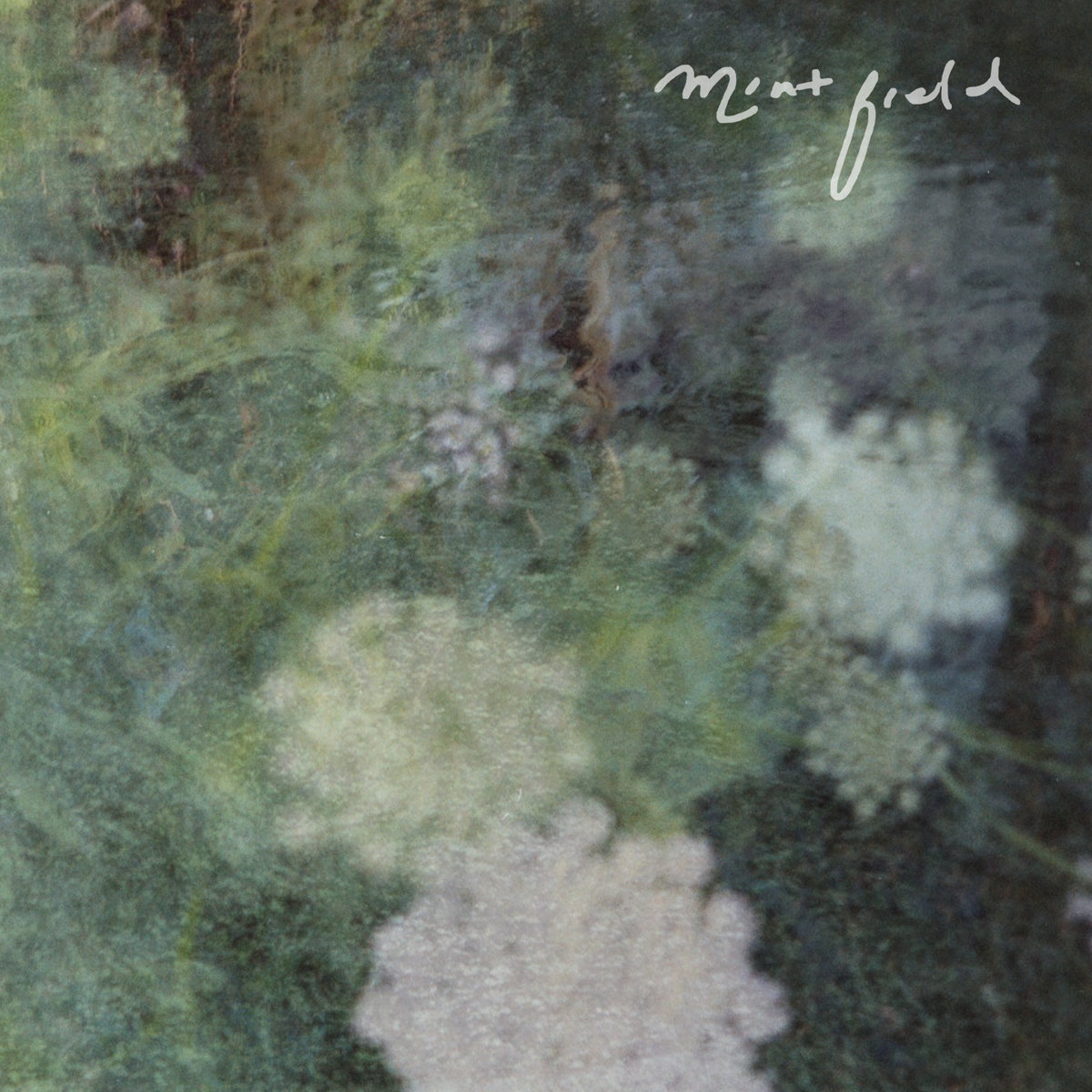 The latest from Mexico City’s Mint Field brings members of Ulrika Spacek on board. The album achieves a gentle balance between fever and dream that shows growth over the predecessor’s fuzzed-out psychedelia. Sentimiento Mundial allures with wistful, airy melodies that touch on multiple genres, working in moments of their usual dark subterfuge.
The latest from Mexico City’s Mint Field brings members of Ulrika Spacek on board. The album achieves a gentle balance between fever and dream that shows growth over the predecessor’s fuzzed-out psychedelia. Sentimiento Mundial allures with wistful, airy melodies that touch on multiple genres, working in moments of their usual dark subterfuge.
Originally a two piece, Sentimiento Mundial sees original founder Estrella del Sol (vocals, guitar) forming with Sebastian Neyr (bass) and drummer Callum Brown (Ulrika Spacek), and a rhythm section bolstered by collaborators Cathy Lucas (Vanishing Twin), and Nathan Pigott. Both Brown and producer Syd Kemp are members of UK space-gaze outfit Ulrika Spacek, whose presence served to add a more clean-cut and spiky edge to the band's sound.
The album begins deceptively sweet, del Sol’s dreamy vocals serving as the focal point, before launching into offbeat rhythms and dissonant melodies. Fuzzy atmospheric guitar passages are present, yet Mint’s Field’s penchant for heavily-laden effects is reduced in favor of clean, often feverish, guitar, offset by hypnotic motorik beats and repetitive rhythms that provide a dreamy consistency ("No te Caigas", "Contingencia").
Overall, the album sees the band moving in the direction of intelligent pop and away from guitar onslaught. This is not a hook-laden disc, choosing to captivate instead with clean guitar phrasing overlaid by angelic vocals ("Aterrizar," "Nuestro Sentido"), flirting with an interplay of airy sounds and darker, edgy moments ("Nadie te est√° Persiguiendo"). This is a rewarding creation, but prior fans may need more time to unravel the changes.
 
 
 
Read More

